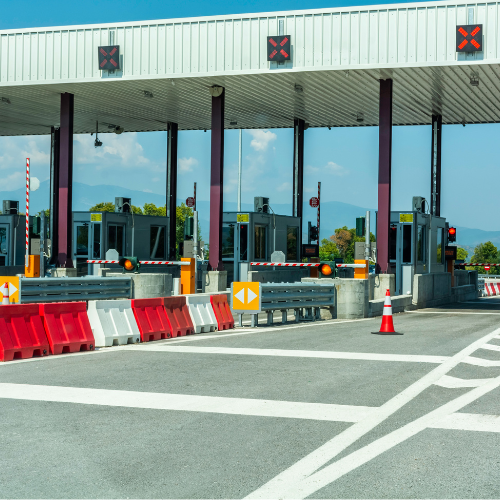Introduction: Rethinking Urban Transportation.
Urban areas are facing unprecedented challenges due to rapid population growth and increasing traffic congestion. Traditional roadways, often hampered by traffic lights and stop signs, struggle to maintain efficient vehicle flow. In response, the development of toll roads, particularly innovative bridge highways designed without traffic lights, emerges as a compelling solution. This article delves into the economic benefits of toll systems, emphasizing daily revenue potential, long term infrastructure development plans, and the integration of major highways and tunnels into this transformative framework.
Understanding the Demand for Enhanced Transportation Solutions.
As cities expand, the strain on existing transportation networks becomes more apparent. Traffic lights, while essential for safety, often create significant delays that lead to frustration for drivers and economic losses for businesses.
1.1 The Economic Toll of Traffic Congestion
Traffic congestion results in substantial costs for society, with estimates suggesting it drains billions from the economy each year. By establishing toll roads that allow for continuous travel, governments can mitigate these economic losses, enhancing overall efficiency and productivity.
1.2 Environmental Benefits of Streamlined Traffic
With climate change and environmental sustainability at the forefront of public discourse, reducing vehicular emissions is crucial. Toll highways that facilitate uninterrupted travel can significantly lower carbon footprints, aligning with global efforts to combat climate change. The incorporation of green building practices in the design and construction of these highways can further amplify their positive environmental impact.

Financial Implications of Toll Collection.
2.1 Unlocking Revenue Streams
Implementing a toll system on a newly constructed bridge highway can yield substantial daily revenue. For instance, if the toll is set at $4 per car and the highway accommodates 25,000 vehicles daily, the resulting revenue could reach $100,000 each day, translating to an impressive annual income of approximately $36.5 million. Even 10% of that is huge and an indicator of whats to come and more in future.This is when that bridge will be constructed. A must have and possible,
2.2 Modernizing Toll Collection Methods
Embracing technology is central to the success of toll systems. Electronic toll collection (ETC) enables instantaneous transactions, minimizing delays and enhancing the user experience. By utilizing mobile applications and automated systems, governments can streamline toll collection, ensuring efficient revenue generation.
Strategic Development of Highways and Tunnels.
3.1 A Comprehensive Infrastructure Plan
The success of a new toll highway hinges on its integration into a broader transportation network. It is vital that this highway connects seamlessly with existing major highways and tunnels, creating a cohesive transportation system that enhances regional mobility.
3.2 The Role of Public Private Partnerships in Financing
Public private partnerships (PPPs) can be instrumental in financing toll projects. By collaborating with private firms, governments can access additional capital and share the risks associated with large scale infrastructure development. This collaboration can lead to innovative solutions that drive mutual benefits.

Local Community Economic Impact.
4.1 Job Creation and Economic Stimulation
The construction and ongoing maintenance of toll highways foster local employment opportunities. From construction workers to administrative positions, numerous jobs can be generated. Moreover, improved transportation infrastructure often attracts businesses, contributing to sustained economic growth in the region.
4.2 Boosting Property Values
Proximity to efficient transportation infrastructure is known to enhance property values. Homebuyers may be willing to pay a premium for residences located near a toll highway, resulting in increased property tax revenues for local governments.
Navigating Public Concerns.
5.1 Addressing Resistance to Toll Implementation
Despite the economic advantages, many individuals may resist the introduction of tolls, viewing them as an unwelcome financial burden. Effective communication strategies are essential for conveying the benefits of toll systems, including reduced travel times and improved infrastructure.
5.2 Ensuring Equity in Toll Systems
The introduction of toll roads can disproportionately affect low income individuals who rely heavily on personal vehicles. To address this, governments can implement tiered toll structures or offer discounts for lower income drivers, promoting fairness within the toll system.

Future Innovations in Transportation.
6.1 Embracing Smart Technology
As technology evolves, the future of toll roads will likely include smart infrastructure. Innovations such as real time traffic data analysis, dynamic toll pricing, and advancements in autonomous vehicle technology can optimize traffic flow and enhance revenue collection.
6.2 Sustainable Transportation Planning
Sustainability should remain a core principle in future transportation development. By incorporating eco friendly practices into toll road construction and operations, such as the use of renewable materials and electric vehicle charging stations, the toll system can contribute to broader environmental goals.
Conclusion: Paving the Way for a Sustainable Future.
The establishment of toll roads, particularly innovative bridge highways that eliminate traffic signals, represents a pioneering approach to modern transportation challenges. By generating substantial daily revenue, these systems can underpin crucial infrastructure development and economic growth. Through strategic planning, community engagement, and the adoption of cutting edge technology, toll roads can lead to a more efficient and sustainable transportation network.Implement this strategy once and enjoy its long term financial benefits. It is a sensible, sustainable, and environmentally friendly approach that will significantly alleviate traffic congestion.
 / practicalengineering
/ practicalengineering Website: http://practical.engineering
Questions and Answers:
1. What is the main objective of implementing tolls on the new bridge highway?
The primary objective of implementing tolls on the newly constructed bridge highway is to create a consistent revenue stream for the government. This revenue can be allocated to infrastructure projects, maintenance, and enhancements of existing transportation systems, ensuring long term sustainability.
2. How does eliminating traffic lights impact toll revenue?
The removal of traffic lights on the new bridge highway is expected to improve traffic flow, reducing delays and congestion. This enhanced efficiency is likely to attract more drivers to use the toll road, thereby increasing daily toll revenue as commuters seek faster travel options.
3. What are the expected daily revenues from the tolls?
While actual revenues depend on various factors, initial estimates suggest that the new bridge highway could generate millions of dollars in daily toll revenue. This income could significantly contribute to funding current and future infrastructure projects.
4. How does the toll system align with the government’s long term transportation strategy?
The toll system is a vital element of the government’s long term transportation strategy, which seeks to modernize and expand existing infrastructure. By incorporating major highways and tunnels into this plan, the government can develop a comprehensive network that enhances connectivity and reduces congestion in the region.
5. What challenges might arise with the implementation of a toll system?
Challenges associated with implementing a toll system include potential public opposition to added costs for drivers, socioeconomic disparities affecting lower income individuals, and the need for effective enforcement mechanisms. Addressing these issues through clear communication and equitable pricing strategies will be crucial for successful adoption.
